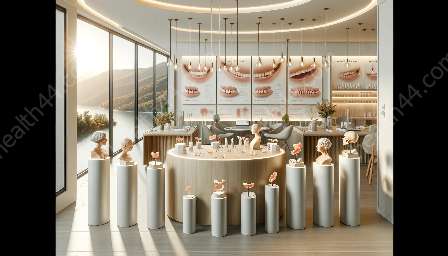Complete dentures play a critical role in restoring oral function and improving esthetics for patients who have lost all their natural teeth. Assessing the functional and esthetic aspects of complete dentures requires a thorough understanding of both the clinical and laboratory aspects involved in the fabrication and fitting of these prosthetic devices.
Functional Assessment
Functional assessment of complete dentures involves evaluating their ability to restore proper masticatory function, phonetics, and stability within the oral cavity. Several key factors should be considered:
- Fit and Stability: The dentures should fit securely and comfortably, with minimal movement during speaking and eating. The stability of the dentures is essential for proper function.
- Bite and Occlusion: The occlusal relationship of the dentures should facilitate efficient and comfortable biting and chewing. Proper alignment and contact between the upper and lower teeth are crucial.
- Masticatory Efficiency: The ability of the dentures to efficiently triturate food during mastication is critical for proper digestion and nutrition.
- Phonetics: The dentures should enable clear and natural speech by allowing appropriate tongue and lip movements.
Esthetic Assessment
The esthetic evaluation of complete dentures focuses on their visual harmony and natural appearance within the patient's oral cavity and facial features. Esthetic considerations include:
- Tooth Color and Shape: The color and shape of the denture teeth should replicate those of natural teeth, providing a pleasing and realistic appearance.
- Arrangement and Alignment: The positioning and alignment of teeth within the dentures should mimic the natural dentition, ensuring a balanced and harmonious smile.
- Supporting Tissues: The dentures should support the facial soft tissues and maintain a natural lip and cheek contour, contributing to an overall youthful appearance.
- Gingival Appearance: The color and texture of the denture base and artificial gums should closely resemble natural gingival tissues, enhancing the natural look of the dentures.
Clinical Examination
During the clinical examination, the dentist evaluates the functional and esthetic aspects of complete dentures by observing the patient's oral movements, speech, and overall appearance. Special attention is given to the fit, stability, and occlusal function of the dentures, as well as the overall esthetic result. The dentist may make adjustments and modifications to optimize both the functional and esthetic performance of the dentures.
Laboratory Assessment
In the laboratory, dental technicians play a crucial role in the assessment of complete dentures through meticulous attention to detail in the fabrication and characterization of the prosthetic components. The technician assesses the functional and esthetic aspects by considering the following:
- Material Selection: Choosing high-quality denture base materials and tooth prosthetics that provide optimal strength, durability, and esthetic appeal.
- Artificial Tooth Anatomy: Creating tooth molds and arrangements that closely resemble natural teeth in color, shape, and occlusal properties.
- Gingival Contouring: Sculpting and characterizing the acrylic base to mimic the appearance and texture of natural gingival tissues.
- Fit and Adaptation: Ensuring precise adaptation of the denture base to the patient's oral anatomy for a secure and comfortable fit.
By carefully considering the functional and esthetic aspects of complete dentures, dental professionals can ensure that these prosthetic devices effectively restore oral function and provide natural-looking smiles for their patients. Achieving a harmonious balance between form and function in complete dentures contributes to overall patient satisfaction and a better quality of life.


